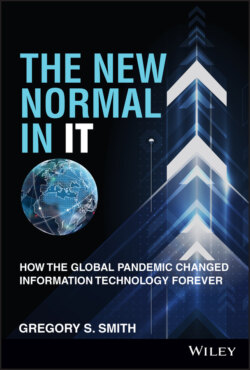Читать книгу The New Normal in IT - Gregory S. Smith - Страница 49
Things I've Done in My Career to Prepare
ОглавлениеI have spent decades working with IT teams to prepare and test for various types of disasters that could impact operations. Halfway through 2017, we set out on an aggressive multiyear strategy to modernize information technology. The strategy included multiple goals:
1 To reduce our reliance of on-premise solutions and reduce our data center's footprint.
2 To expand into the cloud and integrate systems with near real-time web services integrations.
3 To remake vendor management by focusing on the right strategic partnerships and outsourcing noncore technologies to vendors where the technology was their core competency.
4 To develop a world-class IT disaster recovery and business continuity program that included testing production cutover with non-IT staff for mission-critical systems including voice.
5 To create a best practice IT governance framework and cybersecurity approach that, simply put, reduces risk and aligns IT spending with the organization's key business goals and initiatives.
In 2017 and into 2018, we replaced physical servers with a robust and redundant virtualized environment that included consolidation and replacement of corporate storage area network (SAN) disk systems. In 2018, we removed our virtual desktop (VDI) platform and replaced it with a combination of laptops and mini-desktops with virtual private network (VPN) capability. We also started an aggressive strategy to move applications into the cloud within the boundary of a secure single sign-on multifactor authentication portal that included our messaging applications along with other cloud applications including the IT helpdesk service desk. In 2019, we launched our new SaaS-based grants platform and integrated payment services capability with multiple levels of redundancy across the country, deployed a new cloud-based business intelligence and data visualization solution, and migrated our on-premise private branch exchange (PBX) phone system to a cloud-based voice-over-IP (VOIP) solution with an intelligent call-center menu and routing system. In Q1 of 2020, we launched the first three modules of our new human capital management (HCM) system in the cloud. Two and a half months later, we vacated our corporate offices for nearly 100 percent remote work.
Simply put, we had a great strategy with a traditional IT disaster recovery and business continuity plan but got lucky on the timing of the Coronavirus pandemic. If the pandemic had hit us earlier, the negative impacts would have been felt with increasing severity in 2019, 2018, and 2017. Not all organizations were lucky, and many CIOs paid a heavy price for their organizations not being as prepared as they could have been for a once-in-a-lifetime global pandemic. This text will provide readers with factual information from CIO, CISO, COO, and CEO contributors, as well as researched information on what worked and didn't work, lessons learned, and how organizations are changing their IT strategy for the future so that when another global pandemic, or other significant business disruption or regional emergency affects their geographic corridor, the impacts will be far less than the Covid-19 pandemic.
